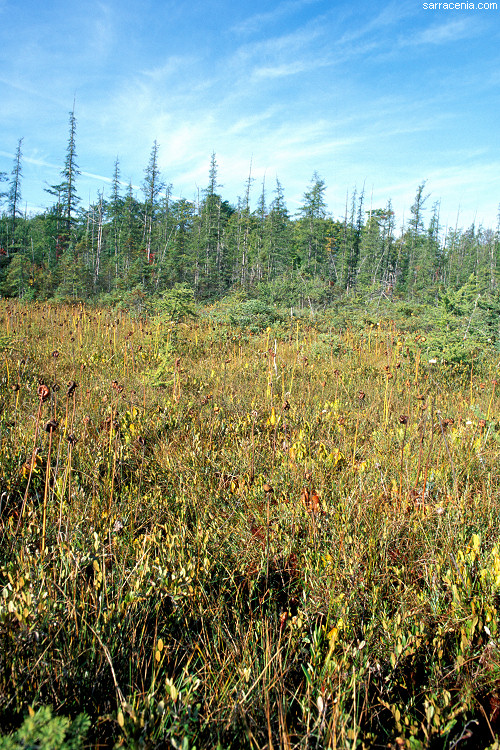
Bog #1:
This is the first place I visited--a
Sphagnum-rimmed lake, nestled in a mixed conifer/hardwood
forest, tucked in an agricultural district (i.e. farmland).
Finding it was tricky. Even after I had located what I hoped was
the best place to stop my car, my scribbled instructions led me
over hills, through woods, down ravines, past farms,
and so on before I finally saw the pond I was seeking.
If you have ever tried to follow someone else's verbal directions
to a bog, you know how dicey it is--you have maybe a 50% chance of
successfully finding the site. But my guide's information was
great, and it only look about an hour to reach the perimeter of
the bog.
But that was not
the end of my challenges. I next had to figure out how to get to the
plants. First I had to cross the deep bog moat, then fight through
dense groves of willows, and hop old rotting snags. Of course, it would
have been easy to stick to the open patches where the travelling seems so
clear and easy, but those are mined with hidden, deep watery holes
desirous
of snaring foolish botanists toting thousands of dollars worth of
camera equipment.
But in time, and with a few scares that pumped a bit
of excess adrenaline into my bloodstream, I made it to the pitcher
plant area at the edge of the lake.
This is the view looking away from the water, back towards the trees.
The shrubby foreground is habitat for carnivorous plants--you can
see a few Sarracenia
inflorescences poking up here and there. The ground is wet,
spongy, and is probably a false lake bottom. However, the shrubs
suggest that the ground is comparatively stable.
The bog was populated with a great number of Sarracenia purpurea.
The pigmentation variety was bedazzling--some were bright red,
some bright green, some veined, some not. It was a candy store! The
plants portrayed in this web show document only a small amount of the
diversity present.